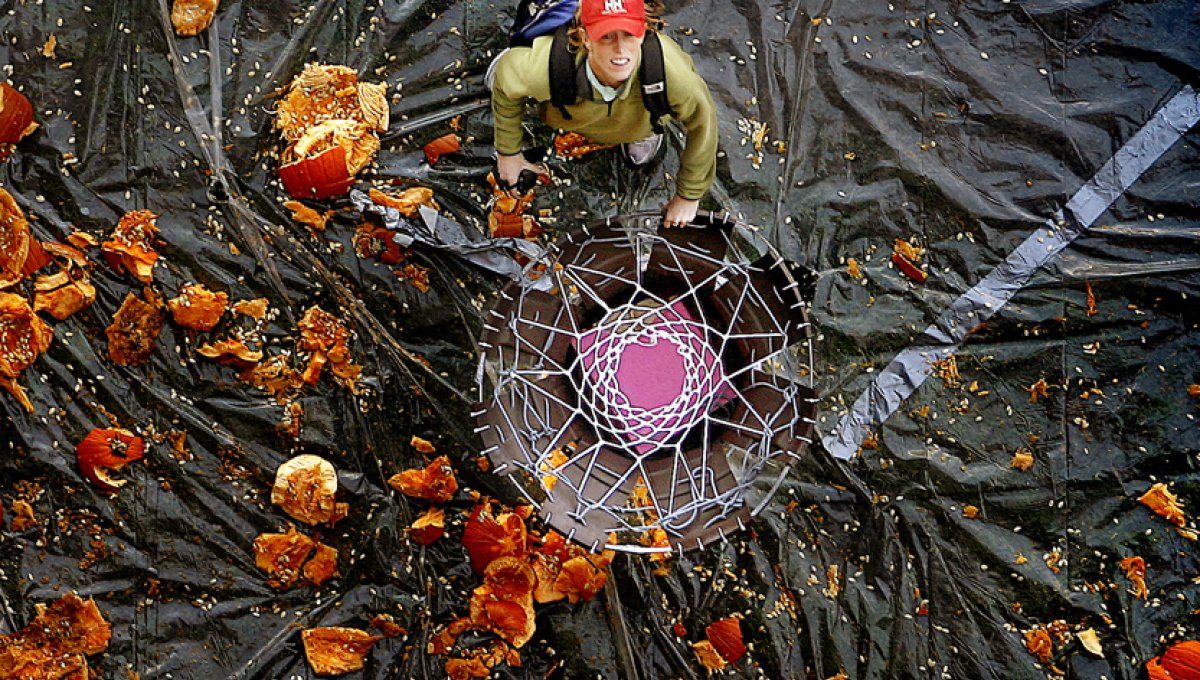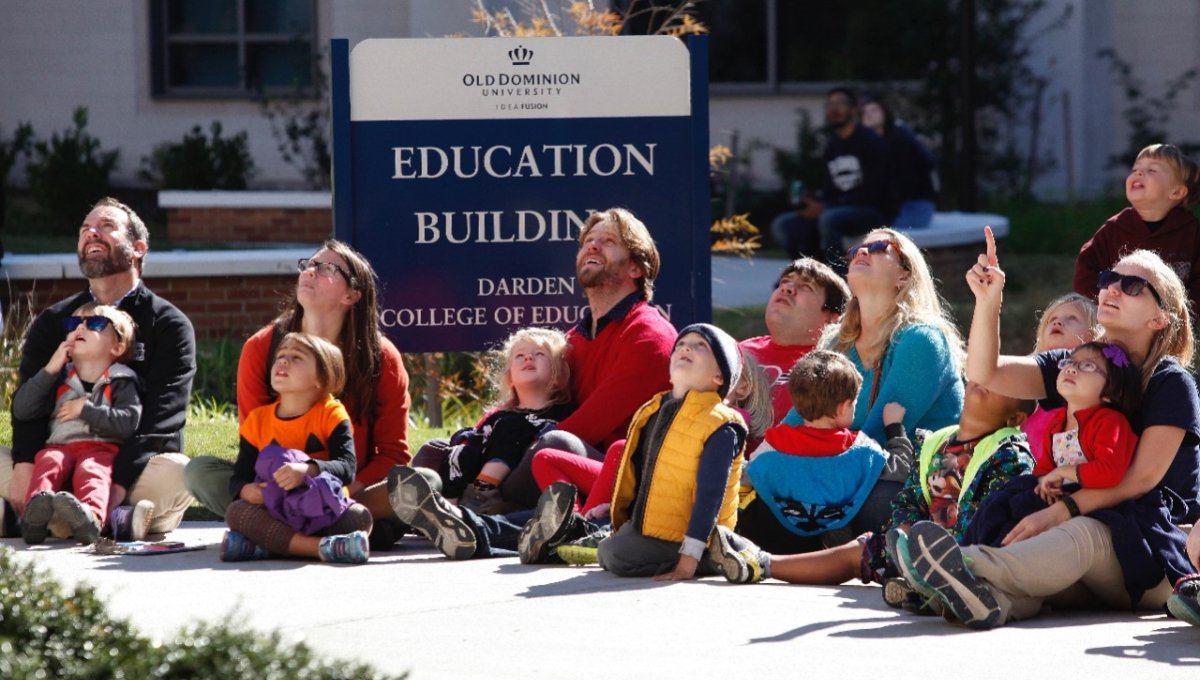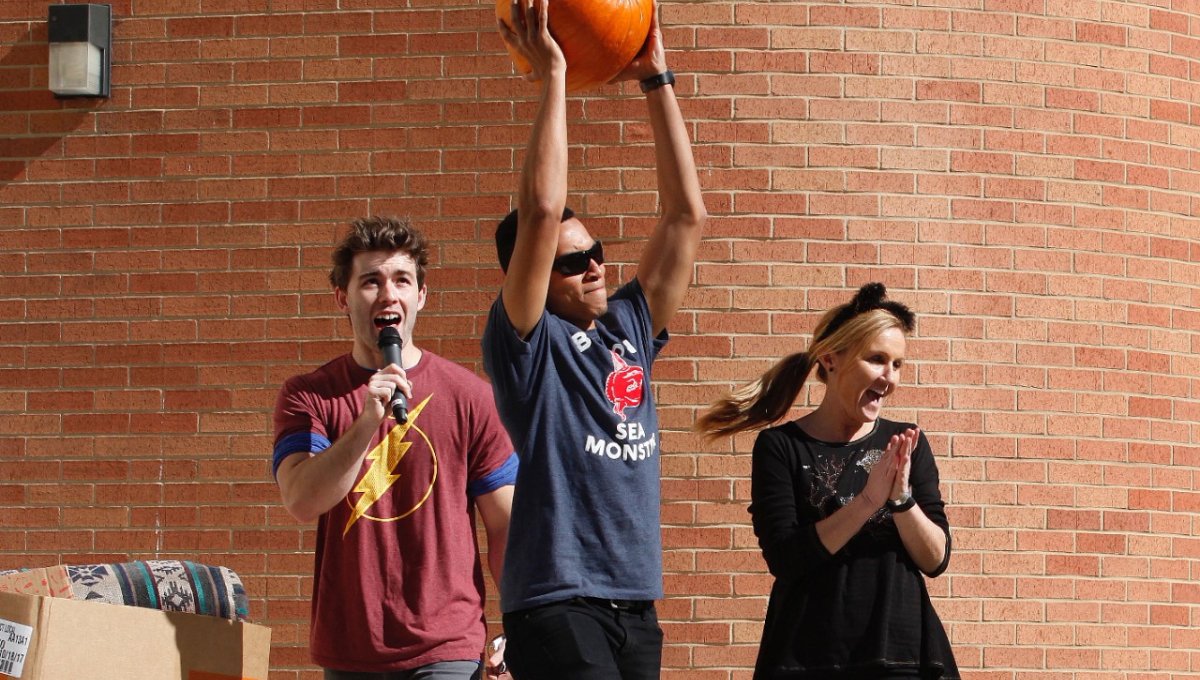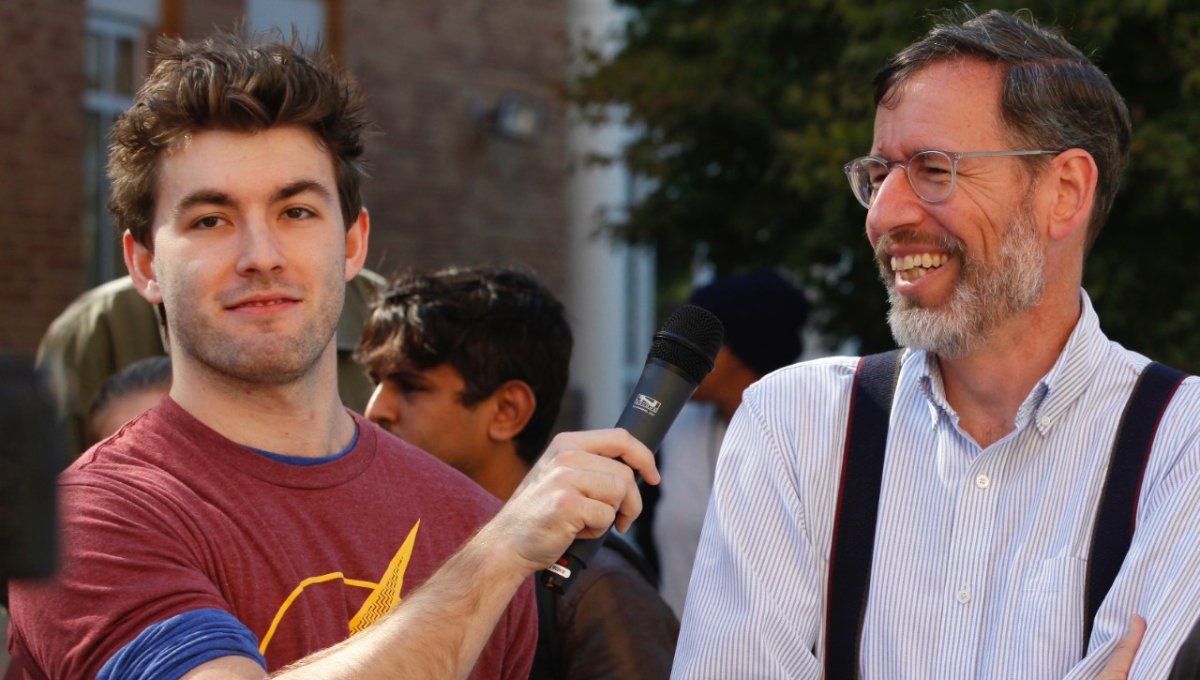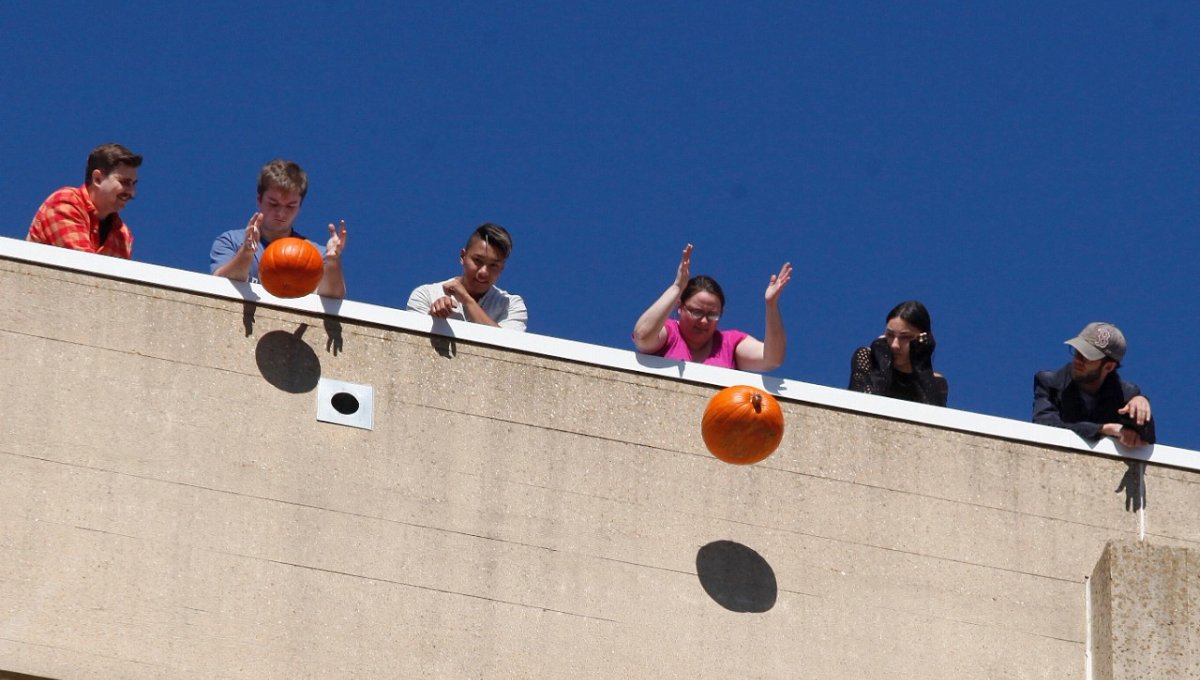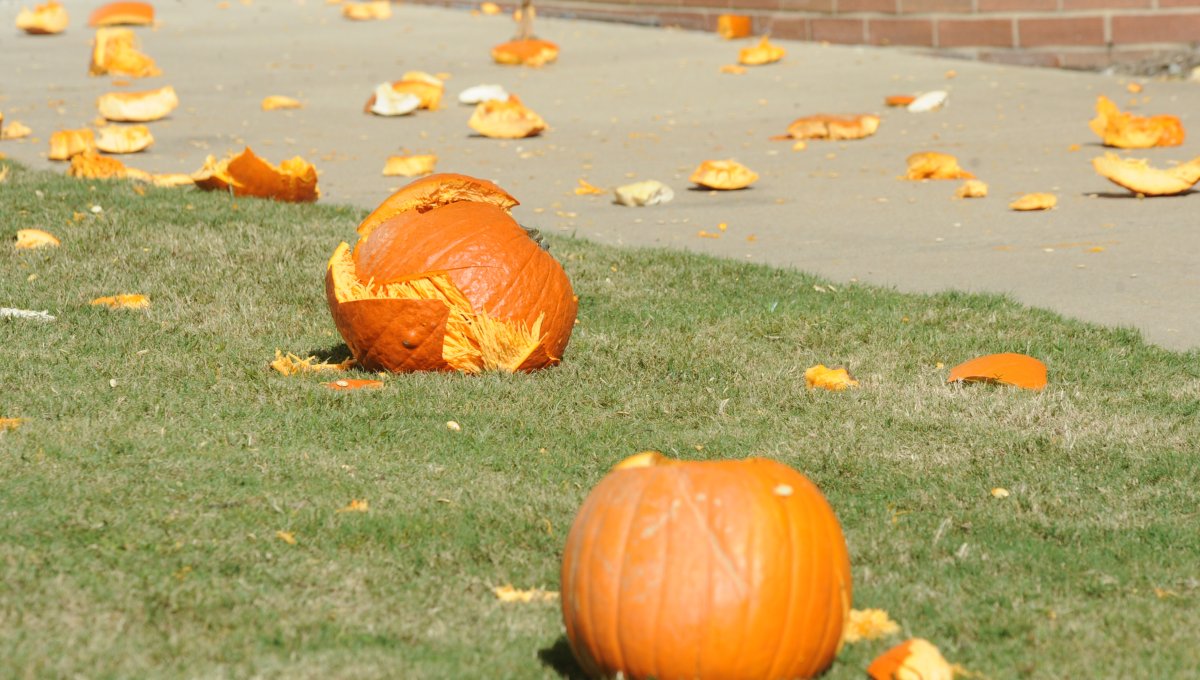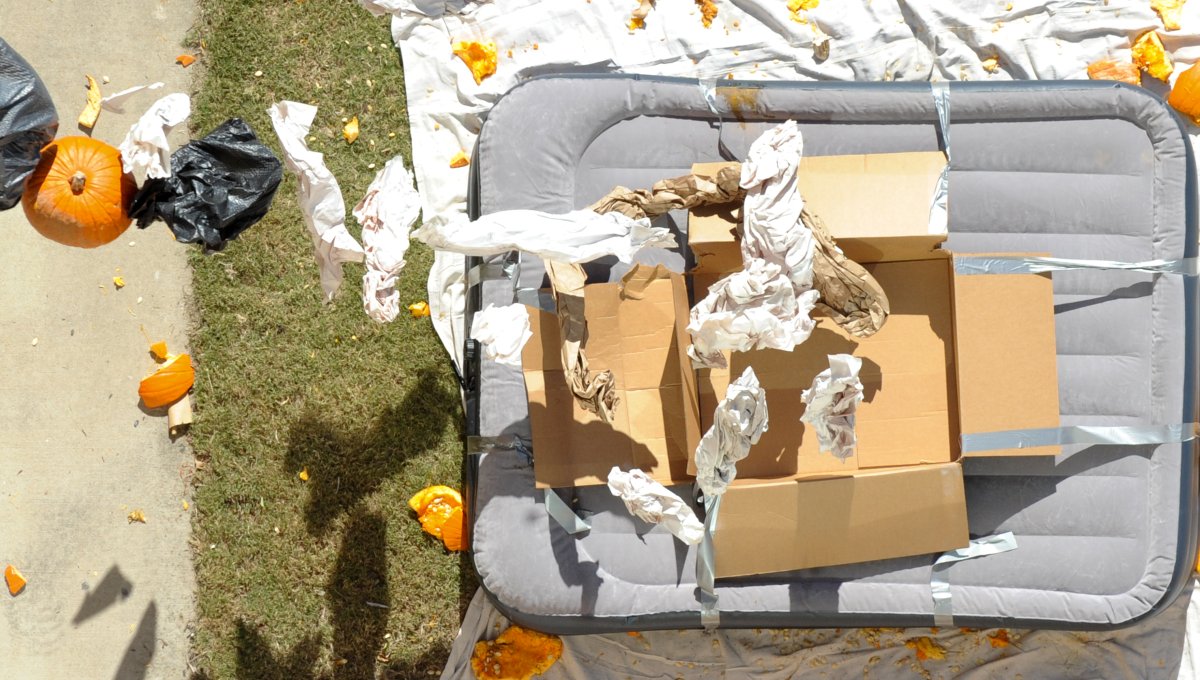The Society of Physics Students (SPS) is a national association for university students interested in physics. Old Dominion University's outstanding national chapter was established in 1968 and is the home of the Pumpkin Drop, a nationally celebrated STEM Halloween event.
SPS is open to all majors and is aimed at promoting teamwork, public outreach, and professional development.
President
James Wile
Secretary
Ashlyn Deiter
Telescope Lead
Wyatt Elliott
Vice President
Jessica Blevins
Historian
Hayden Dauphin
Contact
To learn about upcoming events and how to get involved, come by our regularly scheduled club meetings in the Michael and Kimthanh Lê Planetarium on the first and third Tuesday of the month during activity hour.
Our mailbox is located in the Office of Student Activities and Leadership (OSAL) Office in room 1071 Webb Center.
What We Do!
Our chapter of SPS takes an annual field trip to NASA's Wallops Flight Facility for a private, full-day tour of their research and development labs. Learn about opportunities at NASA, meet the people involved, and get firsthand knowledge of NASA's internship and fellowship programs!
Ever tried playing Mario Kart on a Planetarium? We have! Join us for our monthly socials to meet the heart of SPS- the people.
Long ago, Old Dominion University students began a now national STEM tradition known as the Pumpkin Drop! What is the Pumpkin Drop? Head to the tallest building on campus, and drop pumpkins. Simple! We invite on-campus organizations, groups of friends, or anybody who thinks they have what it takes to beat the Pumpkin Drop to join. Each pumpkin your design saves will add a point to your score. If you end up saving the most pumpkins before your design breaks or a pumpkin cracks and splatters, you win! Think you're up for the challenge?
- Any pumpkin catcher must be transported by the team which created it, and it cannot be fixed or manipulated after being placed under the pumpkin target. Only our cleanup crew will be allowed near your device until its testing is finished. You and your team will be responsible for removing the pieces of your catcher after it's finished testing.
- If we deem your team's pumpkin catcher to be too dangerous or messy (packing peanuts, water, etc.) your pumpkin catcher may be disqualified from competing.
- All pumpkin catchers are tested until failure or to five successful catches. The pumpkin catcher that can save the most pumpkins is the winner. If two or more teams successfully save five pumpkins, further testing will commence until one fails or a pumpkin breaks.
- The yearly prize for the winning team will be announced a few weeks ahead of the competition.
- What is the force of gravity (in N) on your 9 pound pumpkin?
- What is its potential energy at the top of BAL (in J)?
- What is its kinetic energy the instant before it hits your pumpkin catcher (in J)
- How much work does your pumpkin catcher have to do to stop it (in J)? [Hint: What is its kinetic energy after it has been stopped? How much did the catcher change the pumpkin's kinetic energy?]
Our chapter of SPS takes an annual field trip to NASA's Wallops Flight Facility for a private, full-day tour of their research and development labs. Learn about opportunities at NASA, meet the people involved, and get firsthand knowledge of NASA's internship and fellowship programs!
Ever tried playing Mario Kart on a Planetarium? We have! Join us for our monthly socials to meet the heart of SPS- the people.
Long ago, Old Dominion University students began a now national STEM tradition known as the Pumpkin Drop! What is the Pumpkin Drop? Head to the tallest building on campus, and drop pumpkins. Simple! We invite on-campus organizations, groups of friends, or anybody who thinks they have what it takes to beat the Pumpkin Drop to join. Each pumpkin your design saves will add a point to your score. If you end up saving the most pumpkins before your design breaks or a pumpkin cracks and splatters, you win! Think you're up for the challenge?
- Any pumpkin catcher must be transported by the team which created it, and it cannot be fixed or manipulated after being placed under the pumpkin target. Only our cleanup crew will be allowed near your device until its testing is finished. You and your team will be responsible for removing the pieces of your catcher after it's finished testing.
- If we deem your team's pumpkin catcher to be too dangerous or messy (packing peanuts, water, etc.) your pumpkin catcher may be disqualified from competing.
- All pumpkin catchers are tested until failure or to five successful catches. The pumpkin catcher that can save the most pumpkins is the winner. If two or more teams successfully save five pumpkins, further testing will commence until one fails or a pumpkin breaks.
- The yearly prize for the winning team will be announced a few weeks ahead of the competition.
- What is the force of gravity (in N) on your 9 pound pumpkin?
- What is its potential energy at the top of BAL (in J)?
- What is its kinetic energy the instant before it hits your pumpkin catcher (in J)
- How much work does your pumpkin catcher have to do to stop it (in J)? [Hint: What is its kinetic energy after it has been stopped? How much did the catcher change the pumpkin's kinetic energy?]










